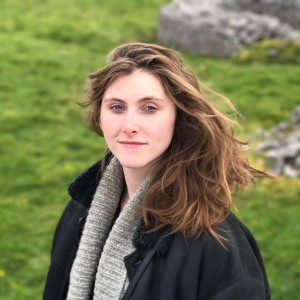DBF Interviews: Caelainn Hogan
Published 11/11/2019 Caelainn Hogan was born in Dublin in 1988, and grew up a stone’s throw from Ireland’s biggest holding centre for adoptions. Her journalism has featured in The New York Times Magazine, Harper’s, The New Yorker, VICE magazine, The Guardian, Al Jazeera English, The Irish Times and The Dublin Review. In her debut book, Republic of Shame, she examines Ireland’s institutions for unmarried mothers, and the people whose lives will be forever impacted by the country’s fixation on shame.
Caelainn Hogan was born in Dublin in 1988, and grew up a stone’s throw from Ireland’s biggest holding centre for adoptions. Her journalism has featured in The New York Times Magazine, Harper’s, The New Yorker, VICE magazine, The Guardian, Al Jazeera English, The Irish Times and The Dublin Review. In her debut book, Republic of Shame, she examines Ireland’s institutions for unmarried mothers, and the people whose lives will be forever impacted by the country’s fixation on shame.
Caelainn will be in conversation with Katie Hannon on Friday, 15 November at 6.30 pm. Find out more here.
What first made you interested in researching and writing a book about the institutions for unmarried mothers?
I began writing the book in 2017, the year that the results of the test excavation in Tuam were released. I had been reporting abroad as a freelance journalist but was back home in Ireland, working on stories about current forms of institutionalisation, like direct provision and emergency accommodation. A catalyst for me was realising how little I knew about Ireland’s religious-run institutions, particularly the so-called mother and baby “homes” where women pregnant outside of marriage were sent. When I began speaking to people about these institutions, I quickly came to realise how many lives were still being impacted by this legacy of shame and stigma. People I knew personally were affected. People my own age who were adopted through the institutions were still being denied access to their own birth information. There was a new generation only beginning to search.
I wanted to speak with many different people who had been inside these institutions, to understand this legacy through their lived experiences. I spoke with a mother who gave birth twice in Tuam and was sent to a Magdalene Laundry and also to a nun who worked in Ireland’s biggest mother and baby home. They described a surreal system of secrecy. It became more and more important to me to understand the experiences of people who had been behind the walls of these institutions.
One of the most gripping aspects of the book is how contemporary it is. We have a tendency to view these places as part of Ireland’s recent history, but your book draws a lot of attention to the fact that for many people, it’s still a huge aspect of their lives. Did you have a particular moment when it really hit you how current this subject matter is?
You did a lot of your research and interviews in 2017 and 2018, which were tumultuous years for women in Ireland with the referendum to repeal the 8th amendment. How did this affect the research you were doing and your own attitude towards the subject matter?
As illustrated in your book, many people in Ireland are still affected by what happened in these institutions. Based on your experiences, is there any way the average person living in Ireland can help the healing process?
It’s important to realise that this is our present, not just our past. Thousands of people’s lives are still being impacted both by what they experienced in the institutions and the ongoing denial by church and state of access to their personal records and information. If you’re Irish, chances are you know someone affected.
The Adoption Bill and the Retention of Records Bill are two pieces of legislation still under consideration which directly impact survivors. Noelle Brown, a survivor and activist, said recently that people should ask, “What did we do for Marriage Equality and what did we do for Repeal?” She wants people to understand that the Irish state is still discriminating against adopted people by denying them access to their birth information and to see this as an issue of equality.
Many people have helped to break the silences that surrounded these institutions and continue to do so. Through the book I hope more of those voices are heard.
